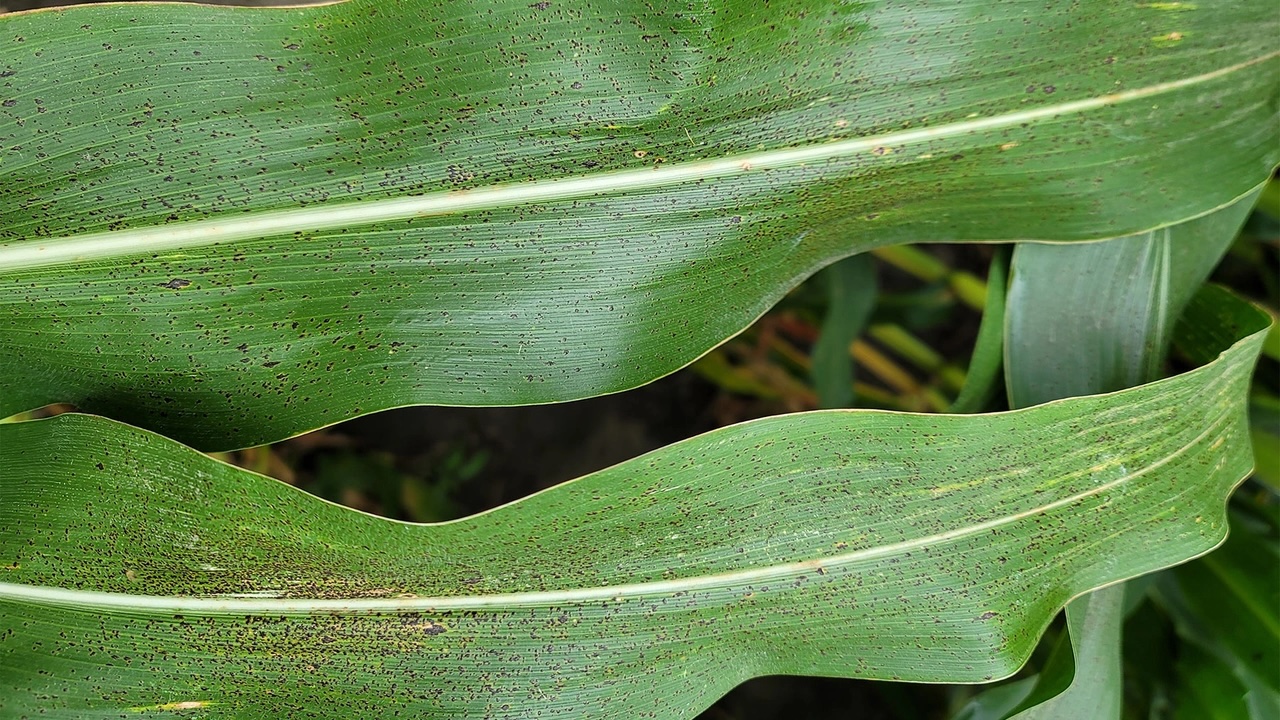Should tar spot be treated late in season?

Our crop consultant says we have tar spot in a couple of fields. When is it late enough that we do not need to worry about it? Should we spray something? First time we have seen it — what does it mean for next year?
The Indiana certified crop adviser panel answering this question includes Dan Ritter, Dairyland Seed agronomist, Rensselaer; Brian Overstreet, soil conservation coordinator, Rensselaer; Steve Gauck, Beck’s agronomist, Greensburg; and Dan Quinn, Extension corn specialist, Purdue University.
Ritter: Tar spot really takes off in September if environmental conditions are ideal for the disease. If the infestation is severe and has been established for a while, there may be some benefits in treating, like protecting stalk quality and standability.
However, by mid-September, effect on final yield should be minimal. Unless it is an extreme case, hold off on treating. We know now that tar spot can overwinter, so take note of the hybrid and location. Also, make sure to watch the field for stalk integrity. There may be limited effect on yield but at the expense of stalks. In that case, a timely harvest may be merited.
Overstreet: Once we hit the R4 stage, we do not see much response to fungicide treatment. If your corn is not to this level of maturity, it could be worth the treatment if you have less than 2% to 3% disease coverage. If the crop is past that growth stage, the disease will affect plant health and stalk strength, so plan on harvesting those fields early.
For next year, watch those fields closely if the weather is conducive to the disease. Work with your seed supplier to get hybrids that are tolerant to tar spot. Download the Tarspotter app and load your fields into the app to give you a heads up on timing for scouting next year.
Gauck: Our northern Indiana friends have shown that scouting for tar spot is crucial. Once corn reaches R4, there is not a profitable advantage to spraying a fungicide. The fields where tar spot is aggressive after R4 need to be a priority for harvest, as stalk quality will deteriorate.
Tar spot can overwinter in residue, so residue management and crop rotation are vital for next year. The main key is to scout early and often. The weather has a direct effect on the severity of tar spot. Hybrid selection can help, but select the best hybrid for your farm first. Budget for some fungicides next year.
Quinn: If the tar spot is found prior to or during the R1 growth stage, then a fungicide application is likely needed and will help protect corn yield potential. However, if the tar spot is found as late as R4, then a fungicide application is likely not needed. The tar spot will not have large impacts on final yield because it came in too late.
If this is the first year that tar spot has been observed in your fields, it will be important to monitor in future years. Typically, once you have tar spot, you have it, but it will be dependent on environmental conditions during the growing season on when or if it may start impacting the corn crop during the growing season. The timing and severity of tar spot is largely dictated by environmental conditions, which makes watching for it and scouting previously impacted areas important.

